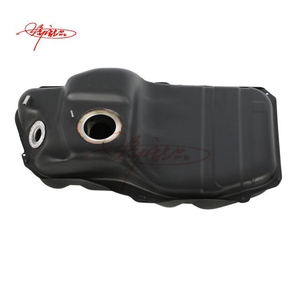(47 products available)


























































































































































































Following are types of GPS tracker Philippines services:
Handheld GPS Trackers
These are portable devices used to track people, pets, and cars. They are called handheld GPS trackers because they are small and can fit in the hand. They can track anything that moves from one place to another. For example, if someone goes to a different country, the handheld GPS tracker will show where that person goes on the map. It tracks the person's location every time they move. Police can use handheld GPS trackers to follow criminals. If a criminal runs away, the police can track the criminal's car with the handheld GPS tracker. It helps catch the criminal quickly. Parents can use handheld GPS trackers to know where their kids are. If the kids go outside, the parents can check the tracker to see where they are playing. It helps keep the children safe by knowing their location. Handheld GPS trackers are also used in sports. For example, runners can use them to track their running routes and check how far they run. It encourages them to do better every time they run. The handheld GPS tracker shows the history of where they have been. It helps set goals for improving performance.
Vehicle GPS Tracker
Vehicle GPS trackers are devices installed in cars, trucks, and motorcycles to track their location. They use the Global Positioning System (GPS) to provide real-time location information. The vehicle GPS tracker is a small device placed inside or outside the car. It tracks the vehicle's location on a map. One use of vehicle GPS trackers is to find stolen cars. If a thief steals the car, the police can track the car with the GPS tracker. The police can see the car's location on the map and tell where it is going. It helps recover the stolen car quickly. Fleet companies also use vehicle GPS trackers to track their delivery trucks. If a customer calls to ask where the package is, the company can track the truck's location and tell when it will arrive. It helps manage the delivery schedule and keep the customers updated. Delivery companies use vehicle GPS trackers to track traffic and find the best routes. If there is a traffic jam, they can reroute the delivery truck to avoid delays. Emergency services, like ambulances and fire trucks, also use vehicle GPS trackers. In an emergency, the dispatch center can track the vehicle's location and send help where needed.
Personal GPS Tracker
A personal GPS tracker is a small device that tracks where a person is on the map. It can be attached to a bag, belt, or wrist like a watch. One use of personal GPS trackers is to keep kids safe. Parents can give them to their children. If the kids go missing, the parents can track the device and find where they are. It helps locate the children quickly. Another use of personal GPS trackers is to monitor elderly people with dementia. If the old person wanders away from home, the caregiver can track where they went and find them. It helps keep the elderly safe by knowing their location. Sports and fitness enthusiasts can also use personal GPS trackers. Runners can wear them during runs to track their distance and speed. It helps set goals for improving fitness.
Asset GPS Tracker
An asset GPS tracker is a device used to track valuable things like packages, trailers, or construction equipment. It helps find where the asset is located. One use of asset GPS trackers is to monitor the delivery of packages. The customer can track the package's location on the map and know when it will arrive. It helps keep updated about the delivery status. Another use of asset GPS trackers is to track trailers in logistics. Fleet managers can see where the trailer is on the route and plan the next stops. It helps manage the logistics schedule and optimize asset utilization. Construction companies can use asset GPS trackers to monitor equipment like bulldozers and cranes. The manager can track where the equipment is located on the construction site. It helps with asset management and improves operational efficiency.
Regular Software Updates
Many devices now have tracking capabilities. To ensure optimal performance and security, regularly update the software on these devices. Updates often include improvements and fixes that address vulnerabilities. By updating, users can take advantage of the latest features and enhancements.
Device Health Monitoring
Device health monitoring involves tracking the performance and condition of devices with tracking capabilities. This ensures they function properly. Monitoring can help identify issues such as reduced battery life or connectivity problems. These problems could affect the device's ability to track accurately.
Location History Review
Location history review refers to examining the recorded locations of a tracking device over time. This feature allows users to see where the device has been. They can analyze the data for trends or patterns in movement. Location history can be useful for various purposes, such as monitoring travel routes or tracking asset usage.
Geofence Management
Geofence management involves setting up and controlling virtual boundaries around specific areas using GPS technology. Users can define geofences to receive alerts when a tracked device enters or exits a designated zone. This feature enhances security and enables monitoring of location-based activities within specified regions.
Battery Life Optimization
Battery life optimization is crucial for devices with tracking capabilities to ensure they last longer between charges. Users can reduce the frequency of location updates or adjust the tracking interval. Disabling non-essential features like continuous data transmission or keeping the device in power-saving mode also helps. Tracking devices with optimized batteries can maintain connectivity and tracking accuracy for extended periods, preventing unexpected power loss.
Before buying a GPS tracker in the Philippines, it’s important to know the market trends. Here are some factors to consider before buying a GPS tracker in the Philippines.
Market Trends
It’s important to do research and know what people are buying. This will help people stock popular items. Look for news and reports that talk about what’s hot in the GPS world.
Target Customers
People should ask themselves who they want to sell to. Is it car owners, parents wanting to track their kids, or businesses with many vehicles? Different people want different types of trackers. Knowing the main customers will help choose the right kind of GPS tracker to buy.
Legal Considerations
Find out if there are any laws about using GPS in the Philippines. Some places need permission to track someone. Make sure the products being bought are legal and follow all the rules.
Product Quality
It’s important to buy trackers that many people say are good. Look for reviews and ratings to see what works best. Quality is very important when it comes to GPS trackers. A good tracker will last long and not give problems.
After-sales Service
When buying from a provider, check if they will help fix problems or give more information about using the product. It’s always good to have someone to call if something goes wrong.
Some GPS car trackers are DIY-friendly. They come with installation guides that allow non-professionals to install and activate the devices. While the installation process may vary depending on the device, here are general steps for installing a DIY-friendly GPS tracker for a vehicle.
Choose the right spot
Find a place to install the device. At this point, it is crucial to consider the type of tracker being installed. For instance, if it is a magnetic tracker, the installation process will be much faster since one only needs to stick the device on a magnetic surface.
If it is a non-magnetic device, one may want to install it under the dashboard. The area between the front seats is also a good spot. Other great areas include the trunk, under the wheel, or in the glove compartment. Avoid visible areas that may alert thieves of the presence of a GPS tracker.
Prepare the device
Some devices may need to be opened up to connect the wires. This may involve unscrewing some screws. Always read the user manual to understand the right preparation steps for a specific device.
Connect the cables
At this point, it is important to refer to the user manual. Different devices have different wire colors that serve different purposes. Some may need to be connected to the vehicle's power supply. In case they need to be connected to the fuse box or the vehicle's ignition system, it may be best to consult an expert mechanic for assistance.
Secure the device
Once the device is connected, it is important to secure it well to avoid it falling while the vehicle is in motion. For magnetic devices, double check that they are stuck to a magnetic surface. Non-magnetic devices can be secured using zip ties or velcro.
Test the device
After securing the device, it is important to test it to ensure it is working properly. Run a test to see if the live tracking feature is working. If the tracker allows setting up alerts, test to see if they are working as they should. Ensure the device is charged to avoid power issues during the test.
Hide the wires
Exposed wires may give away the location of the device. They also make the installation area look untidy. Hide the wires by tucking them under the seats or between the car's panels.
Q1. Do GPS trackers work in the Philippines?
Yes, GPS trackers work in the Philippines. However, they need a cellular network or satellite connection to function.
Q2. Is a driving GPS tracker legal in the Philippines?
GPS trackers for vehicles are legal in the Philippines. However, tracking someone without their consent is illegal.
Q3. How accurate are GPS trackers in the Philippines?
GPS trackers in the Philippines have an accuracy level of about 10 to 20 meters. Factors like signal interference can reduce their accuracy.
The keyword "gps tracker philippines" exhibits a stable interest with an average monthly web search volume of 20. Over the past year, there has been no significant change in web search volume, maintaining a consistent 0% growth rate both in the three-month and twelve-month analysis. However, a notable spike in web searches was observed in January 2024, reaching up to 70 web searches, while other months consistently hovered around 10 web searches.
The trend for "gps tracker philippines" shows minimal fluctuations with the exception of January, which stands out as an anomaly. Typically, the web search volume remains at a low but steady level, indicating a niche interest or specific seasonal requirements. The spike in January could be attributed to specific market events or increased consumer awareness during that period, but the quick return to baseline web search volume suggests that this was not a sustained increase in interest.
The consistent web search volume with occasional spikes might indicate a stable market demand punctuated by brief periods of heightened interest. This pattern could be influenced by factors such as new product launches, promotional campaigns, or changes in consumer behavior that temporarily boost interest in GPS trackers in the Philippines. Analyzing these spikes more closely could provide deeper insights into market dynamics and consumer behavior trends related to this product category.